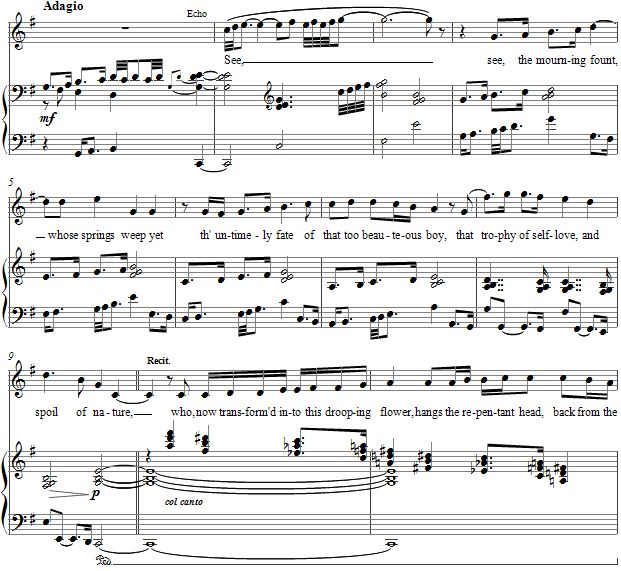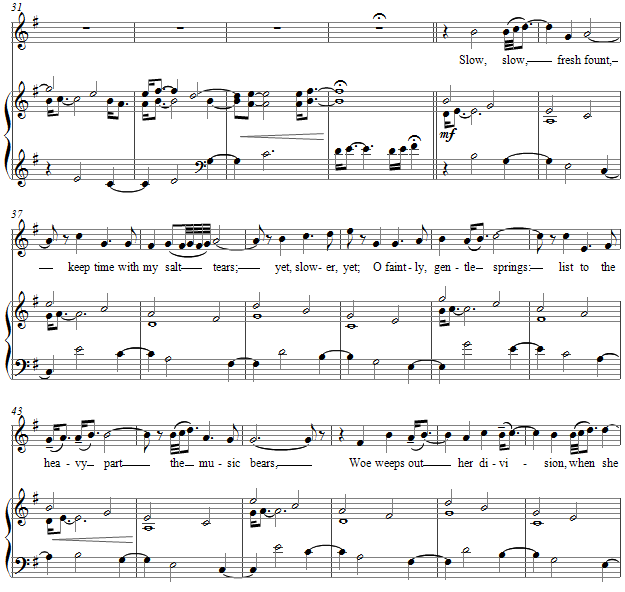Music and Texts of GARY BACHLUND
Vocal Music | Piano | Organ | Chamber Music | Orchestral | Articles and Commentary | Poems and Stories | Miscellany | FAQs
Slow, slow, fresh fount - (2013)
Ben Jonson
for soprano or mezzo soprano and piano
See, see, the mourning fount, whose springs weep yet
Th' untimely fate of that too beauteous boy,
That trophy of self-love, and spoil of nature,
Who, now transform'd into this drooping flower,
Hangs the repentant head, back from the stream,
As if it wish'd, "Would I had never look'd
In such a flattering mirror!" O Narcissus,
Thou that wast once, and yet art, my Narcissus,
Had Echo but been private with thy thoughts,
She would have dropt away herself in tears,
Till she had all turn'd water; that in her,
As in a truer glass, thou might'st have gazed
And seen thy beauties by more kind reflection,
But self-love never yet could look on truth
But with blear'd beams.
Why did the gods give thee a heavenly form,
And earthly thoughts to make thee proud of it?
Slow, slow, fresh fount, keep time with my salt tears;
Yet, slower, yet; O faintly, gentle springs:
Woe weeps out her division, when she sings.
Droop herbs, and flowers,
Fall grief in showers,
Our beauties are not ours:
O, I could still,
Like melting snow upon some craggy hill,
Drop, drop, drop, drop,
Since nature's pride is, now, a withered daffodil.6 pages, circa 7' 00"
Ben Jonson
The text is found in Cynthia's Revels, or the Fountain of Self Love, Act I Scene 2. (1601), by Ben Jonson (1573-1637), English Playwright and Poet, and the first Poet Laureate of England, from 1619-1637.
This text is taken from a scene which finds Echo ruing Narcissus' fate. The form of the setting is akin to a recitative and lament in reference to past musical ears and styles reinterpreted today. Solidly in G as tonic, the transformation of which Echo sings in parlando fashion is colored in non-harmonic triads against the subdominant. After the long recitative, the aria takes up with a motive drawn from the harmonies preceding.
The ground bass of eight measures in length begins, really a canon between soprano and bass voices with a middle alto line, while the vocal line fills in additional harmonies as well. The accompaniment is marked mezzo forte and should be sostenuto throughout.
The center section to the aria takes the ground bass in rhythmic diminution as a varying and more ornamental vocal line makes irony of the agony. A return to the aria's opening in da capo fashion completes this work.
The score for Slow, slow, fresh fount is available as a free PDF download, though any major commercial performance or recording of the work is prohibited without prior arrangement with the composer. Click on the graphic below for this piano-vocal score.



